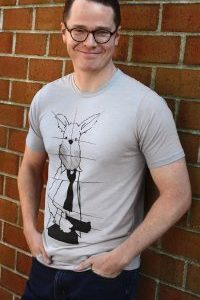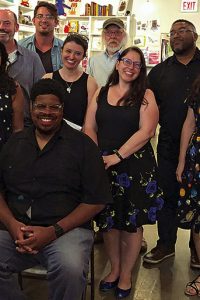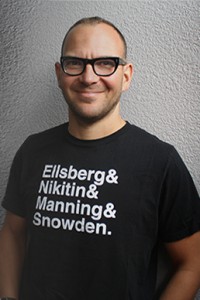Spotlight on Artist Ethan Price
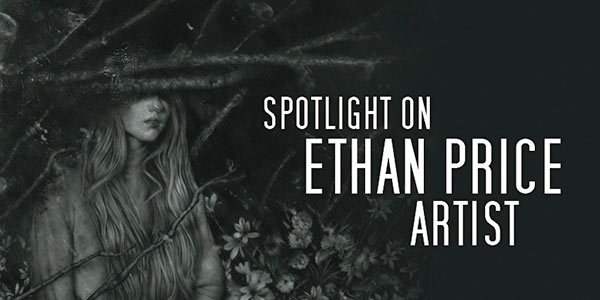
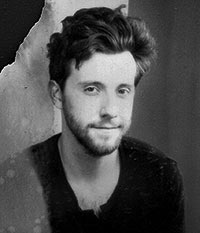 ETHAN PRICE is a visual artist living in Kentucky. His work implements a delicate handling of drawing and painting, punctuated by various textured overlays to create a body of work that evokes mystery, decay, and the passage of time.
ETHAN PRICE is a visual artist living in Kentucky. His work implements a delicate handling of drawing and painting, punctuated by various textured overlays to create a body of work that evokes mystery, decay, and the passage of time.
His work has been featured in publications like Infected by Art, and has shown in a variety of galleries across the US including Arcadia Contemporary, Arch Enemy Arts, and Nucleus Gallery.
What was your introduction to working in the field of science fiction, fantasy, and surrealist art? What were the influences that drew you in?
Early on I was really fixated on that first big wave of Japanese anime that was coming into the US in the mid-to-late ’90s. I was really into Vampire Hunter D, Akira, Cowboy Bebop, and JRPGs as a kid.
As time went on, I started getting more interested in the world of fine art. People like Phil Hale and James Jean bridged that gap for me to begin digging into that world. From there, I became interested in artists like Magritte, Edward Hopper, and a handful of the artists lumped into the Symbolist movement.
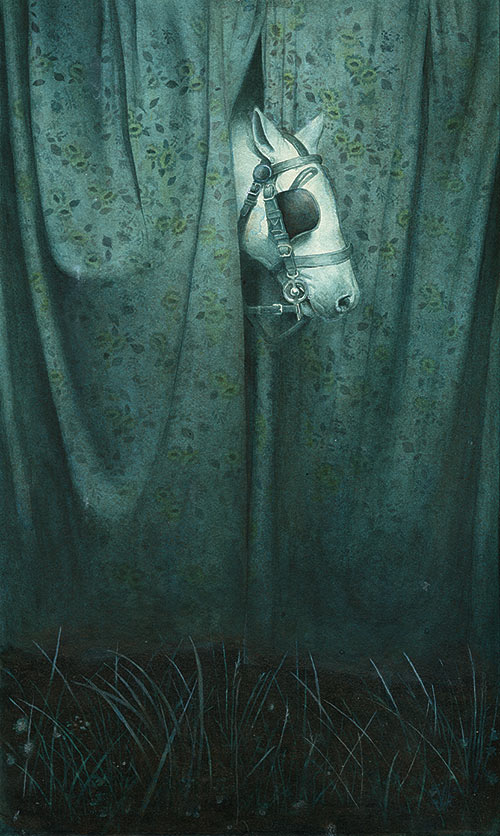
What does your ideal art project look like, if you had all the time in the world, and could work on anything you wanted to?
The most important thing to me is making sure that it’s something that is truly resonating with me on a subconscious level at that moment. There needs to be some innate pull there to see it to the end and bring it out to the world. If it’s not generating some form of excitement, it’s probably not worth doing.
Trying to find that potency in a project is always a moving target, so it’s hard to define in specific terms what makes something truly ideal since it’s always changing constantly.
Your work features unexpected juxtapositions and a moody atmosphere. How do you go about conveying the emotional impact of your ideas in visual form?
That ties into finding something that’s resonating with you at the moment. Visual art is built on poetic meanings rather than absolute truths, so I don’t tend to set out to explicitly detail any one particular idea, meaning, or emotion. Otherwise, it can end up feeling a bit contrived. You have to leave room for something bigger to enter into it and relinquish some control. It’s a strange process that makes it slippery to describe how it all comes together because a work of art is ultimately describing something that isn’t easily captured in words.
I tend to feel, or at least hope when I make something, that if the idea resonates with me, then it’ll find others it resonates with emotionally as well. There are always techniques that may help yield results, to create a specific mood or atmosphere on a surface level, but starting a new piece like it’s a recipe list for me can make the work pretty shallow. There’s a lot of subconscious work, and just letting go along the way that has to be part of the process.

How do you keep it fresh for yourself and keep learning new techniques and improving your craft? Have there been any recent changes or discoveries in your art process, or do you feel settled into something that’s really working for you already?
I had a pretty good run of creating a consistent body of work for the last few years, but recently I have stepped back to find a new approach and subject matter. I started to feel limited by what I was doing – that I had wrung out everything I wanted to say, and was beginning to repeat myself.
It’s become so much harder for creatives to feel comfortable trying something new because of the constant pressure to keep up with the pace of how media is consumed now. It’s hard to take the foot off the gas and go in a different direction. Especially when you start to get some praise for what you’re doing, the allure of continuing to keep repeating that thing gets pretty hard to resist.
What does your workflow look like from concept to realization? Any unusual techniques or inspirations?
I generally explore a few ideas on paper and then transition into locking into the composition through photography. My body of work and approach tended to be more influenced by photographic mediums and the textures found in analog film.
These days as I’m trying to create a newer body of work, I’m trying to find a more painterly and abstracted approach, relying less on photography and more on memory.
 While you are here, please take a moment to support Locus with a one-time or recurring donation. We rely on reader donations to keep the magazine and site going, and would like to keep the site paywall free, but WE NEED YOUR FINANCIAL SUPPORT to continue quality coverage of the science fiction and fantasy field.
While you are here, please take a moment to support Locus with a one-time or recurring donation. We rely on reader donations to keep the magazine and site going, and would like to keep the site paywall free, but WE NEED YOUR FINANCIAL SUPPORT to continue quality coverage of the science fiction and fantasy field.
©Locus Magazine. Copyrighted material may not be republished without permission of LSFF.




